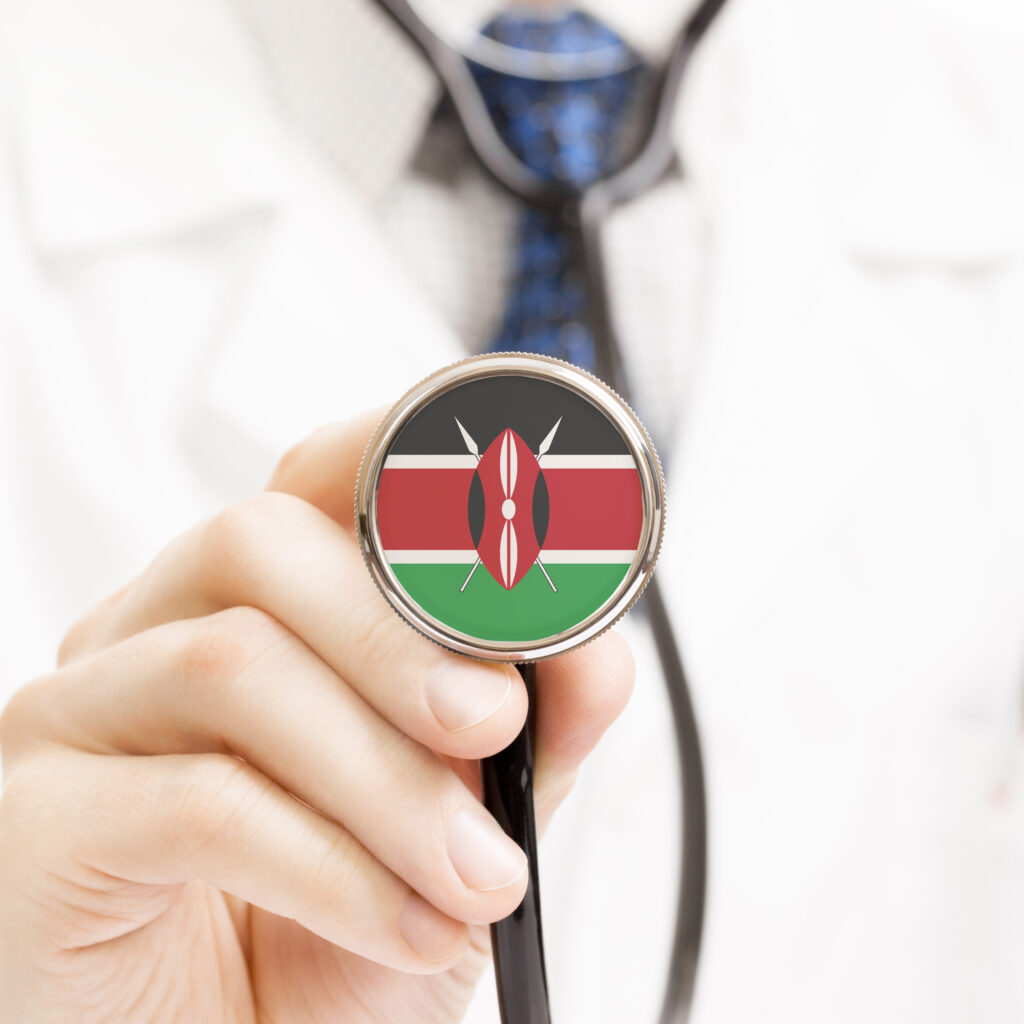
At a Glance
In some ways, Kenya is a study in contrast. With Lake Victoria in the west and Indian Ocean beaches in the east, the country is famous for its beauty. Tourists from around the world flock to its exotic safaris and bustling cities. The country reaps impressive financial benefit from its reputation; in 2018, it took in 8 billion from tourism and travel1.
Despite its reputation as a destination for rest and relaxation however, everyday life for many Kenyans is grueling. The Kenyan economy is stronger than surrounding countries, yet 46% of the population lives in poverty2. In addition, the country has an orphan population of over 3 million. Many of these children lost their parents to AIDS/HIV.
Healthcare
In sub-Saharan Africa, Kenya is a leader in healthcare. Medical tourism from nearby countries has grown as patients seek the superior care in Kenya’s hospitals and clinics3.
In spite of the country’s regional status, however, many Kenyans lack access to basic healthcare. This is largely because of a shortage of healthcare providers in the country. Sub-Saharan Africans are burdened with almost 24% of the world’s disease. Yet the region is home to only 3% of the global healthcare workforce4. In addition, most medical workers are clustered in large cities, leaving rural areas with very little access to healthcare.

Eye Care
According to the Optometrists Association of Kenya (OAK), there are over 300 practicing optometrists in the country5. These practitioners earn either a diploma in optometry from the Kenya Medical Training College6 or a bachelor’s in optometry and vision science from Masinde Muliro University of Science and Technology7.
As of 2016, there were 115 practicing ophthalmologists in the country. Half of these providers were located in the capitol city of Nairobi. Thus, other cities and rural areas have very limited access to ophthalmological care8.
Of the 7.5 million Kenyans who need eyecare, only 1.6 million are able to visit an eyecare provider. As a result, more than 75% of cases of vision impairment in the country are preventable9. Some of the leading causes of blindness include cataracts, uncorrected refractive error, trachoma, vitamin A deficiency, and glaucoma9.
The Kenya Society for the Blind serves the country’s large population of blind and visually impaired. They train Braille teachers, provide low vision devices, and conduct vision screenings for school children. The Society operates a weekly eye clinic at their Nairobi headquarters where low-cost eye exams, glasses, and eye drops are available10.
International Aid
Because of the great need for eyecare, many government, non-government, and faith-based groups around the world have stepped up to help Kenyans. These include the Fred Hollows Foundation of Australia, the German Organization for the Blind, the United States’ CDC, Christian Eye Network, and Eyecare for Africa from New Zealand.
To gain more insight into Kenyan eyecare, we spoke with Erick Henderson, OD from Pittsburg, PA.
How did you start working in Kenya?
I became involved while I was in school. I started going over to give out glasses etc. We volunteered with Lamu Center of Preventative Health. It is a clinic that offers health screenings and education.
Lamu is a small island off the eastern coast. People do a lot of fishing, some agriculture, and some woodworking. There is a small local hospital that does mostly emergency care. There are no fulltime optometrists or ophthalmologists on the island.
What is the scope of optometry in Kenya?
A Kenyan optometrist is similar to a dispensing optician
In the community of Lamu, what are the most common vision problems and eye diseases?
Uncorrected refractive error is the biggest cause of vision impairment. Cataracts are also common. Many individuals suffer eye injuries from fishing and woodworking, two major occupations in the region. These injuries can cause loss of vision if left untreated. In addition, pingueculas and pterygia are very common from exposure to water, dust, and sand.
What cultural practices exist for treating eye conditions?
They put honey in their eyes if they hurt.
Are prescription medications and OTC drugs available in pharmacies?
Some prescription drugs are available. However, they are somewhat more expensive than they would be in the United States, and options are limited. Some OTC drops, such as artificial tears, are available. But they are mostly generic and poor quality.
What is your current involvement and what do you hope to accomplish in the future?
In 2018, my wife, Erin Keim, OD and I went over to give full eye exams. We took over 1200 pairs of glasses from Mission Vision of Pittsburg. I wanted to go back in 2020 but because of Covid 19, that was postponed. I want to make it possible for VOSH and FCO to get involved in helping.
I also want to make it more sustainable. The Lamu Center of Preventative Health sponsors some people who are in great need. They provide the means for them to go to Mombasa for treatment. There is a hospital there that does free surgeries. For others, the clinic might just provide direction, so people know where to go or what to do.
What things inspired you during your time in Kenya?
It was surprising to see people who are much happier than we are. We assume that poor countries are more depressing places, but these people are happy in spite of that. It puts our own complaints and annoyances into perspective. For example, if I want a pair of sunglasses, I can walk two blocks to CVS and pick up a cheap pair. A Kenyan would have to save for a while to afford the same thing. Their attitude inspires me to be more humble and grateful.
What advice do you have for US and Canadian OD students who want to be involved in international optometric service during their careers?
It can be hard to get started but if this is what you are passionate about, start the process now and get involved. Experience FCO or SVOSH or, if that isn’t available at your school, start a chapter. Don’t be afraid to look for opportunities. Put yourself out there. Let people know that you have a passion for it because there are a lot of opportunities. Ask who you need to talk to. Start with the organizations that are doing it and that will open doors for future opportunities.
Special thanks to Dr. Henderson for sharing his information.
Sources
- https://knoema.com/atlas/Kenya/topics/Tourism/Travel-and-Tourism-Total-Contribution-to-GDP/Contribution-of-travel-and-tourism-to-GDP
- https://www.borgenmagazine.com/kenya-poverty-rate/
- https://www.pd.co.ke/news/national/kenya-sets-sights-on-rising-medical-tourism-sub-sector-17271/
- https://ysjournal.com/the-critical-shortage-of-healthcare-workers-in-sub-saharan-africa-a-comprehensive-review/
- https://optometrykenya.org/
- https://kmtc.ac.ke/department-of-optometry
- http://www.zakenya.com/education/admission-requirement-for-bachelor-of-science-in-optometry-and-vision-sciences-at-masinde-muliro-university-of-science-and-technology-mmust-in-kenya.html
- https://www.businessdailyafrica.com/corporate/Uneven-distribution-of-eye-specialists-kenya/539550-3429750-15qji1rz/index.html
- https://www.health.go.ke/kenya-integrates-eye-care-within-primary-health-care-nairobi-kenya-october-9-2019/
- http://www.ksblind.org/

